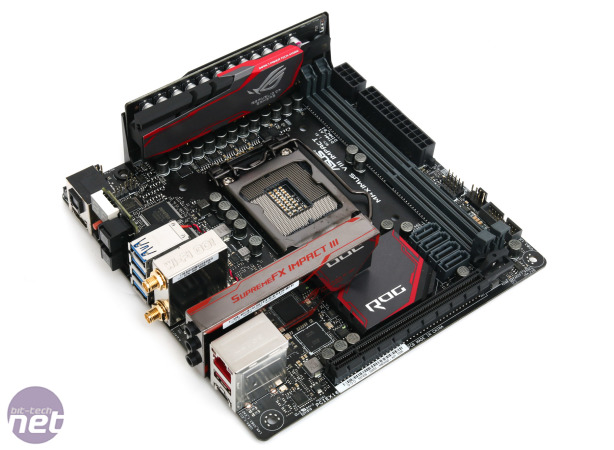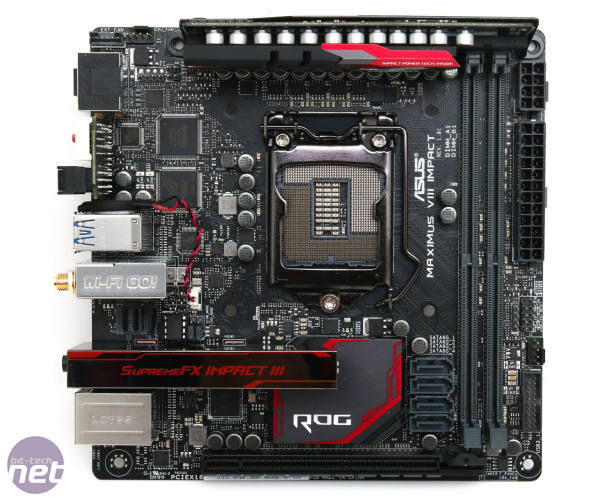
Asus Maximus VIII Impact Preview - Has the King Returned?
It's finally here and in our motherboard test rig as we speak - the Asus Maximus VIII Impact has landed. As a prelude to our full review, we thought we'd take a quick look at the latest effort in the ROG mini-ITX scene and the third incarnation of the Impact, which debuted on Z87 a couple of years ago.We won't be making any conclusions here - it's mainly a close-up, eye-candy fest and an overview of some its key features - but we'll be back with a full review very soon. So, firstly, what about price? It's currently on pre-order for £185 and that's around £10-15 more expensive than its predecessor that we reviewed here.
Click to enlarge
This is to be expected as Skylake boards are generally a bit more expensive than their predecessors due to the fact that some of the power circuitry has moved back onto the PCB but thankfully it's not a massive price increase - noticeably south of £200 is good, and it's only £50-60 more than the Z170i Pro Gaming.
Click to enlarge
Aesthetically, the Impact isn't quite as edgy as it's predecessor and on closer inspection we found that there have been quite a few changes too. There are no power or reset buttons on the PCB - these have been relocated to the rear I/O panel. A small fly in the ointment is the battery - with the Z97 version it was mounted vertically in its own neat socket, whereas now there's a rather unsightly cable stretching across the PCB.
On the plus side, the SupremeFX Impact III audio card sports a snazzy shroud and with the USB 3 header and DIMM slots switching from red to black, it's a little meaner looking too. The Z97 version included a fan extension header that was controllable via the EFI and there's a similar device here too. However, rather than being able to connect this straight to the PCB, you'll need to mount this elsewhere using included brackets and screws - useful for maintaining the aesthetics as the daughterboard is larger this time, but a bit of a pain in that you'll need to mount it yourself.
Click to enlarge
There's still a VRM daughterboard and there's a total of 10 power phases - six for the CPU, two for the DRAM and two for the iGPU. The heatsink for this is removable as is the PCH heatsink so the use of full-cover waterblock such as this one from Bitspower is definitely on the cards. That said, they'll need to get pretty skinny to fit under the sound card and get to the PCH hot spot. The sound card can be removed, but if you're using a discrete GPU as well your only option then would be a USB sound card.

MSI MPG Velox 100R Chassis Review
October 14 2021 | 15:04











Want to comment? Please log in.